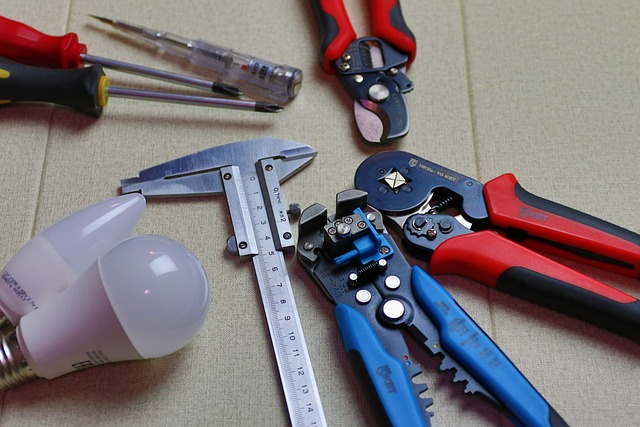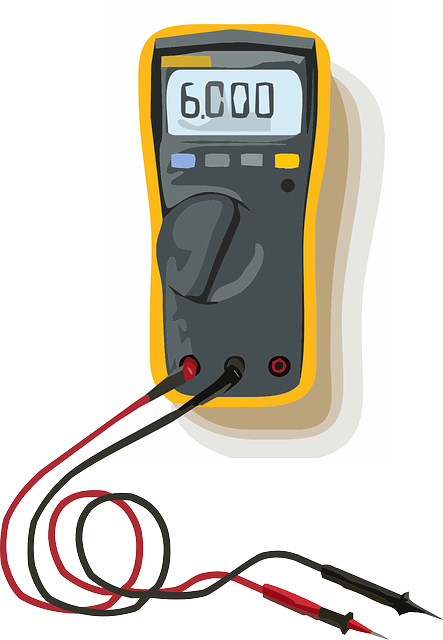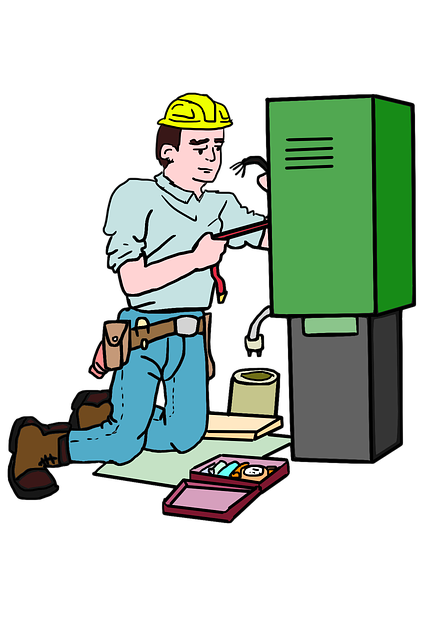Integrating new appliances and electronics requires professional electrical expertise for safe and efficient current management. Electricians navigate voltage needs, circuit breaks, wire types, power ratings, and local building codes, ensuring long-lasting installations. Safety precautions include grounding, insulated wires, regular checks, adherence to codes, and correct gauge wires. DIY outlets installation is manageable with careful planning, but complex cases or code uncertainties require electrician consultation. Best practices involve proper wire securing and specialized testing for continuous safety and system integrity.
“Unplugged? It’s time to get your home wired for modern appliances and electronics! This comprehensive guide, tailored for homeowners and aspiring electricians, demystifies the process of installing and securing new electrical outlets. From understanding appliance wiring requirements to implementing safety precautions, we’ll walk you through each step. Learn how to install outlets, secure wires, and test your work safely and efficiently. Empower yourself with these essential skills—no electrician needed!”
- Understanding Wiring Requirements for Modern Appliances
- Common Safety Precautions When Wiring Electronics
- Step-by-Step Guide to Installing New Electrical Outlets
- Best Practices for Securing and Testing Wires
Understanding Wiring Requirements for Modern Appliances

When it comes to wiring new appliances and electronic devices, understanding the specific requirements is paramount. Modern appliances and gadgets often demand more advanced electrical setups compared to older models. This includes higher voltage levels, dedicated circuit breaks, and specific wire types designed to handle varying current loads efficiently. An experienced electrician can guide you through this process, ensuring your home’s electrical system is up to the task.
They will consider factors such as appliance power ratings, type of wiring needed (e.g., copper vs. aluminum), grounding requirements, and local building codes that dictate safe electrical practices. By adhering to these guidelines and enlisting professional help when necessary, you can ensure your appliances are wired correctly, enhancing safety and longevity while avoiding potential hazards associated with faulty wiring.
Common Safety Precautions When Wiring Electronics

When wiring new appliances and electronic devices, safety should always be a top priority for both DIY enthusiasts and professional electricians. Common safety precautions include ensuring proper grounding to prevent electrical shocks and fires. Using insulated wires and checking connections regularly can also mitigate risks. It’s crucial to follow local electrical codes and use the appropriate tools, such as wire strippers and voltage testers, to ensure safe installations.
Additionally, identifying and labeling circuits is essential to avoid overloading and potential damage. Always turn off power at the main circuit breaker before beginning any wiring work. Moreover, using the right gauge wires for the intended current load is vital to maintain optimal performance and safety. These precautions, when followed by a qualified electrician or carefully executed by those with electrical knowledge, help create a safe and efficient electrical environment for modern devices.
Step-by-Step Guide to Installing New Electrical Outlets

Installing new electrical outlets is a common task for homeowners and can be a great DIY project. Here’s a step-by-step guide to ensure a safe and successful installation:
1. Plan and Prepare: Determine the location of your new outlet and gather the necessary tools, including an electrician’s knife, wire stripper, voltage tester, and the new outlet itself. Always turn off the power at the main circuit breaker before beginning any electrical work. Check local building codes for specific requirements and consider hiring a professional electrician if you’re unsure.
2. Remove the Old Outlet: Carefully take out the existing outlet by unscrewing it from the electrical box. Use your knife to gently pry out any remaining parts or wires connected to the old outlet. Once removed, inspect the space and ensure all wiring is secure and labeled correctly.
3. Install Wiring (if needed): If you’re adding a new outlet in an unused circuit, you may need to run new wire from the main electrical panel. Use non-metallic (NM) cable rated for your area’s climate and follow electrical codes when routing wires through walls or ceilings. Connect the wire to the back of the new outlet according to the manufacturer’s instructions.
4. Secure the New Outlet: Place the new outlet into the electrical box, ensuring it fits properly. Screw it in place, being mindful not to overtighten and risk damaging the outlet or box. Double-check that all wiring is secure within the box.
5. Test and Verify: Before reconnecting power, use your voltage tester to check if the outlet is properly wired and live. Once confirmed safe, turn on the circuit at the main breaker. Test the outlet with a light bulb or small appliance to ensure it functions correctly.
Best Practices for Securing and Testing Wires

When wiring new appliances and electronic devices, adhering to best practices is essential to ensure safety and prevent future issues. A qualified electrician should always be involved in this process to guarantee compliance with local electrical codes and standards. They will know how to properly secure wires, ensuring they are neatly organized and protected from damage. This involves using appropriate cable ties or clips to fasten wires neatly along their length, especially in areas with high traffic or limited space.
Testing is another crucial step that should never be skipped. Electricians use specialized tools to verify the integrity of wiring, checking for any loose connections or potential hazards. Regular testing not only identifies problems early but also helps to maintain the safety and performance of your electrical system over time. This includes examining insulation for signs of wear and tear and ensuring that all components are securely fastened, minimizing the risk of shocks or fires.
When it comes to wiring new appliances and electronic devices, understanding the specific requirements and following safety precautions is essential. By familiarizing yourself with best practices, such as installing electrical outlets correctly and securing wires properly, you can ensure a safe and efficient setup. Remember, for complex or high-risk projects, consulting a professional electrician is always recommended to avoid potential hazards and ensure compliance with local regulations.
